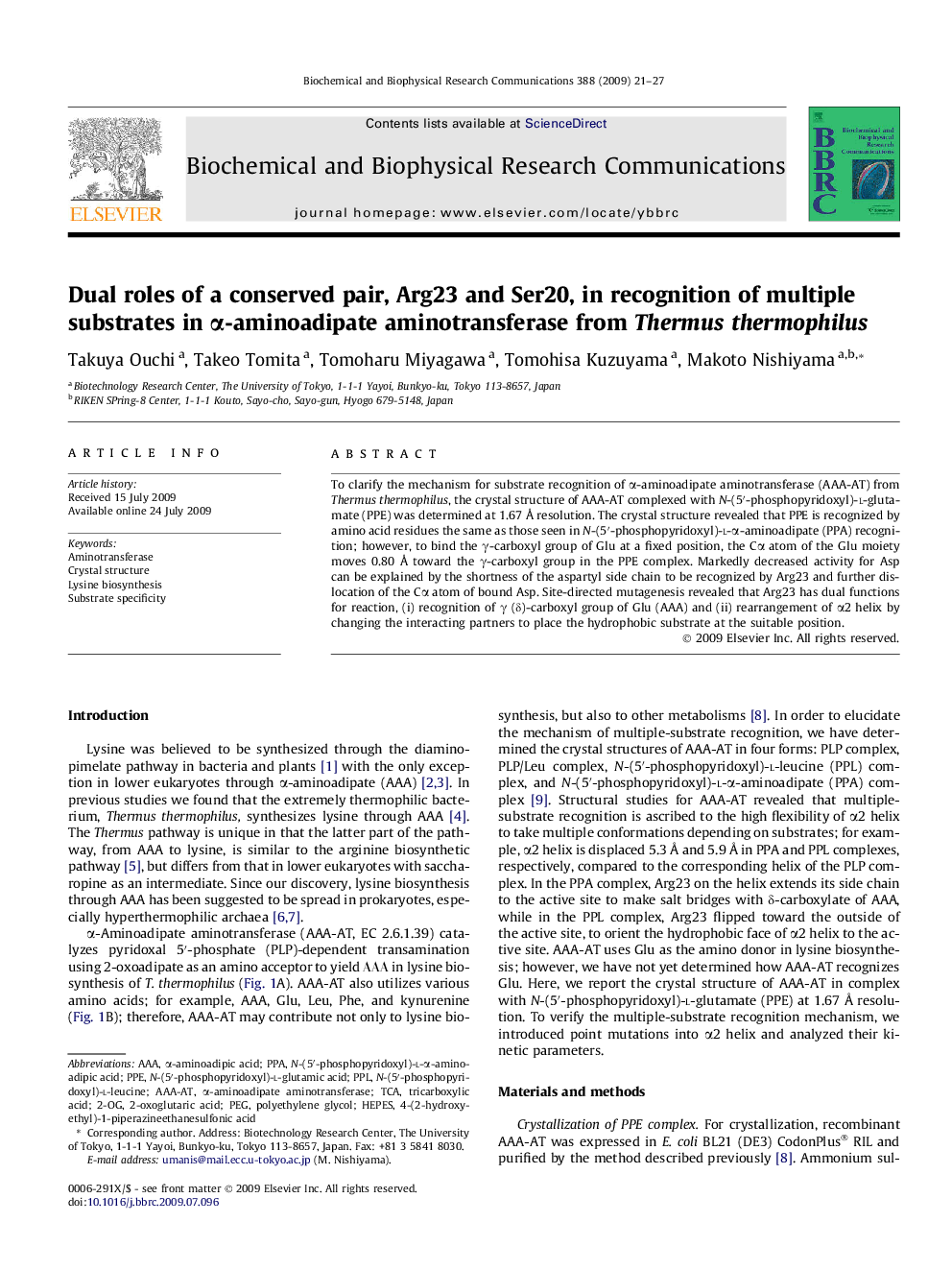| Article ID | Journal | Published Year | Pages | File Type |
|---|---|---|---|---|
| 1933620 | Biochemical and Biophysical Research Communications | 2009 | 7 Pages |
To clarify the mechanism for substrate recognition of α-aminoadipate aminotransferase (AAA-AT) from Thermus thermophilus, the crystal structure of AAA-AT complexed with N-(5′-phosphopyridoxyl)-l-glutamate (PPE) was determined at 1.67 Å resolution. The crystal structure revealed that PPE is recognized by amino acid residues the same as those seen in N-(5′-phosphopyridoxyl)-l-α-aminoadipate (PPA) recognition; however, to bind the γ-carboxyl group of Glu at a fixed position, the Cα atom of the Glu moiety moves 0.80 Å toward the γ-carboxyl group in the PPE complex. Markedly decreased activity for Asp can be explained by the shortness of the aspartyl side chain to be recognized by Arg23 and further dislocation of the Cα atom of bound Asp. Site-directed mutagenesis revealed that Arg23 has dual functions for reaction, (i) recognition of γ (δ)-carboxyl group of Glu (AAA) and (ii) rearrangement of α2 helix by changing the interacting partners to place the hydrophobic substrate at the suitable position.
